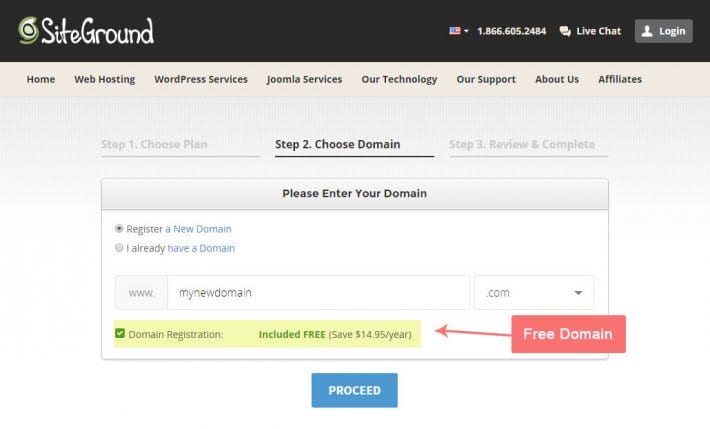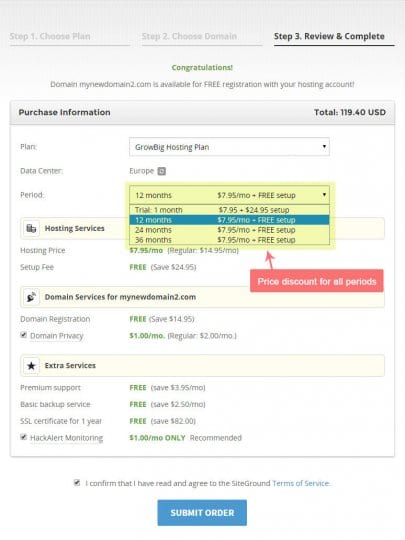HOW TO START A TRAVEL BLOG IN 11 STEPS (AND MAKE MONEY)
I’m frequently asked about how to start a travel blog by many aspiring travel bloggers.
They’re super excited to get paid to travel the world and create a full-time travel life.
Travel blogging is an excellent way to travel full-time. However, travel blogging is not as easy as it looks.
I don’t want you to start travel blogging with an idea that the day after you start a travel blog, you’ll get free trips and living the dream. It took us a year of hard work before we got our first “free” trip, and three years before we could make a full-time income out of it.
It felt like it was going to be a never ending journey to make money travel blogging, but we got there.

Our travel blog is our now full-time business.
The biggest key to making our travel blog a success was treating it like a business from the start.
We made a lot of mistakes, and at the time we started travel blogging, there wasn’t a lot of people who’d figured out how to make travel blogging a full-time income and lifestyle.
Your success could be quicker with the right planning, tools, resources, and learning. We hope to help you avoid some of those blogging mistakes with this post for blog beginners on how to start a travel blog.
If you want more advanced tips and tricks, join our digital lifestyle email community. We’ll give you free email training – on the 4 biggest blogging mistakes we’ve made and how to overcome them.
CLICK TO LEARN HOW TO AVOID THE MISTAKES NOW!
In this post, you’ll find tools and resources on how to start a travel blog.
Some of the links are affiliate, which we receive a commission for if you purchase. Please note, we don’t recommend tools we do not believe can enhance your journey and give you the travel blog success you desire.
You can click to jump ahead, although we do recommend you read the entire post, so you don’t miss an important step on how to start your travel blog the right !
HOW TO START A TRAVEL BLOG IN 11 STEPS
1. Start with a travel blog name
Possibly the hardest, but one of the most important first steps when you think about how to start a travel blog is choosing the right name.
How can you encapsulate your brand and message in one short name?
And I do recommend you make it short and memorable. Your travel blog name is what people will refer to you as and how they will find you. If it’s long-winded and hard to remember, they’ll forget, which means fewer organic visits and shares.
Think long-term when you start a travel blog
I’ve met many travel bloggers who’ve limited their growth with their name choice. For example, AroundTheWorldInOneYear.com – what happens when your travels extend beyond a year? BackpackingThroughAfrica.com – what happens when you go to South America next?
SoloTravelRocks.com – what about the next life stage when the husband and kids come along. Or anything with “budget” in the name can be limiting – what happens if you get sick of sleeping in hostels and eating beans & rice and want to evolve into luxury travel?
It might not be your reality now, but keep the doors open for growth and change so you can evolve with your travel lifestyle. Rebranding is time-consuming and costly!
To be honest, we’re not fussed on our travel blog name. It was fine when we chose it, but now we hate the word blog in the domain name.
We’ve evolved way beyond the status of a travel blog and consider ourselves more to be travel publishers and a media empire (We’ll share more about why we added in the blog part in Section 3 of this post – hosting a travel blog.)
The yTravel part was what we wanted. The “Y” of travel is hugely important to us!
Travel has so much more meaning and depth than just checking off bucket list items, and we wanted to create a travel blog that inspired people to create a lifestyle of travel – one that has a strong purpose and meaning and could evolve to suit your life as it changes.
It’s why we avoided words like backpacker (which we were when we started travel blogging) or family travel. Family travel is obviously a HUGE part of our travel story, but we talk about travel as a lifestyle for ANYONE, which is why we have a diverse readership from students to empty nesters.
Most people refer to us as yTravel and drop the blog part! Yay. Branding is clear and resonates.
You may want to go niche specific which is fine, but be sure to research and plan for it very carefully.
Which leads us to step two of how to start a travel blog (a lot of people skip this!)
2. Start your travel blog with planning
Jumping into starting a travel blog without any planning can mean you get everything wrong from branding to messaging to communication to site design.
Brainstorm, mind map and formulate your thoughts into what you want your travel blog to represent.
Some things to consider before you start:
- What’s your message and theme?
- Who are you serving and how can you help them?
- What kind of content can you write for your community? (start a content list)
- What’s your brand and how can you showcase that through your images, content, site design, and communication?
- What’s your logo and tagline?
Be sure to know what you’re working towards creating through your travel blog and WHY?
My webinar on moving from Blog to Business shares more insights into creating your vision and mission. It’s an essential part to creating a successful travel business.
3. Hosting your travel blog
My biggest advice is to self host your travel blog!
There are many blog hosting software applications where you create an account with a provider, and they host the blog for you. It’s free, BUT it means you give up control of your site. Should something go wrong with the hosting provider, your travel blog goes down with it.
With a self-hosted travel blog, you have total control of managing it, how it looks and how you earn money. (yes free blog hosting platforms like wordpress.com restrict your income earning abilities).
Plus, hosting your travel blog is more professional.
If you do just want to start a diary or start your travel blog as a hobby, then the free blog hosting platforms are fine. Be aware that if you change your mind later and want to earn money from your travel blog, it will be more complicated to change it over.
Buy a domain name for your travel blog
A domain name is the URL of your site. e.g. ytravelblog.com Make it the same as your blog name if you can.
You can purchase a domain name from NameCheap or GoDaddy. Before you do that, check if the hosting company you’ll be choosing offers a domain name with their package. (Our recommendation below, SiteGround does).
What is blog hosting?
Blog hosting is the building you’d rent if you were to start a brick and mortar business. The hosting provider is your landlord! You pay them a monthly fee to rent their internet space so you can host your blog and open the doors.
Hosting your travel blog means you rent space to store your blog’s data, files, and photos so that when people visit your domain name they can see all your content.
I hope that makes it clear to you what it means in the online and blogging world.
We’ve had some terrible experiences with hosting providers, none of who I’ll mention in this post!
We currently use Cloudways and have not had one issue with them.
You may not want to use them when you first start a travel blog – we pay around $80 a month. But definitely consider them when your blog grows, and your cheaper hosting can’t handle the higher traffic numbers and bandwidth.
For a cheap hosting company to start your travel blog, and one that comes highly recommended, check out Siteground
I have since hosted three domain names with SiteGround – CarolineMakepeace.com, 30DaystoMoneyMindfulness.com and Kalyra’sWorld.com
Their services has been excellent. They have transferred an entire site for me with no problems and quick efficiency. I’m super impressed with them and will only use them now for my smaller sites.
You pay a bit more than what other companies like Bluehost offer, but if it gives you a better service and fewer site hassles, making it a valuable investment.
Plans with Siteground start at $9.95 a month.
I’ve only heard people rave about Siteground.
And you can see they offer discounted plans as well for longer commitments.
Another tech-savvy person in my mentoring group said,
“Siteground has the best support. In few minutes they solve 85% of problems, in 15 more minutes they solve rest 15% of the problems. Read reviews, they are great.”
Get started with Siteground here.
Host your Travel Blog with BlueHost
We have heard mixed reviews about BlueHost and I am hesitant to recommend them to you. But I also know a few travel bloggers who I trust that have used them for years and are very happy with them.
They are one of the cheapest blog hosting platforms starting at only $2.95 a month. So if you are just starting out and that is all you can afford it could be a good option,
Although transferring hosts can be a pain, it is possible and we’ve done it about 4 times. You can upgrade your plans with BlueHost as well the larger you get.
Learn more about Bluehost here.
See the next note as to why we recommend that.
Things to consider with travel blog hosting:
- Be careful with the size of your images and the content you are hosting. It can blow up your bandwidth space which will bring about challenges and crashes. Once your traffic starts to grow and the size of the content hosted, you’ll need a bigger plan
- Choose the right domain name. Look for a plan that gives you free domain names if you can. You might have to play around with your name a little to get the domain name you want. For example, we originally wanted yTravel.com but to get that name somebody had parked it and wanted to sell it to us for $30,000. We decided to add blog to the end of it and snagged it that way.
- There are a lot of extra features you can add when hosting your travel blog. Most people will get the Domain Privacy Add-on so that randoms can’t look up your personal details like address, email, and phone number. I highly recommend this. Siteground recently made me aware of this when I contacted them after I suddenly started getting 10+ phone calls a day from website service related companies. I did not have the domain privacy on with a new site I’d hosted with them, which meant my phone number was out there for these people to try and sell their things to!! It’s worth the extra $12 a year to stop them.
Do remember, once your travel blog starts to get much higher traffic numbers, you’ll want to consider upgrading as your travel blog might start crashing.
It’s very common and will happen unless you’re prepared to spend a fair bit of cash. It’s because the cheaper hosting plans are on shared servers, which is why they’re cheap.
That means you’re sharing the rented space with many other sites. Your site might be performing fine, but if someone else’s on your server is not, it might mean your site is impacted i.e. is slow or frequently crashes.
To avoid this, you purchase dedicated servers, which is what we have for our travel, but I don’t recommend it when you start as you won’t be big enough when you first start a travel blog to justify the expense.
I don’t have it for my smaller blogs.
These are just some of the sacrifices when you start travel blogging. We’ve been through them all and our hosting issues stopped, and customer service improved, once we could afford a premium service.
As always do your research and choose the best provider and plan for you. If you can only afford the cheaper hosting plans than that’s your starting point and accept it won’t be perfect.
You’re doing the best you can with what you have and you’ll upgrade to the better when you can afford it.
From what I’ve heard and read, you probably can’t do better than Siteground for cheaper and reliable hosting.
4. Install WordPress for your travel blog
Now you have a rented space and a domain name, it’s time to install WordPress on your blog. It’s important to note, we’re talking about WordPress.org, not WordPress.com.
As mentioned above, wordpress.com is hosted by WordPress, not you!
WordPress.org gives you the ability to host WordPress on your site, and so you get complete control over your travel blog.
I highly recommend you don’t use any other blogging platform apart from WordPress. It’s what the professionals use and is blogging industry standard.
Installing WordPress on your blog is not as complicated as it sounds.
Your hosting provider will make it easy for you to do it from your backend. Contact them for help if you get a little stuck. You’ll be basically just hitting a few buttons and letting the system do it for you.
Sign in with your details and you are ready to start building and setting up your travel blog!
WordPress may feel a little overwhelming to you when you first start your travel blog. Don’t worry, there are a ton of free resources you can find. Search Google and YouTube to help you learn how to use it.
WordPress comes with free themes you can use for your travel blog. There are also a lot of free themes online you can download to use.
A theme is the design of your website and how people can navigate through its pages.
A free theme comes with many restrictions, and you will not be able to customize many of the features. That means you’ll have a travel blog that could look a lot like others.
You want originality so you can share your particular brand and message.
We recommend choosing a premium theme.
A premium theme costs around $75 – $100 for lifetime use. You have more flexibility for customization, and they have better features and functionality. A premium theme is an investment into your business.
Businesses involve investments.
We have our site custom-designed by professional website designers. It is expensive, and we do not recommend it when starting a travel blog.
It takes time to figure out what works and doesn’t.
It’s best to use the cheaper themes until you get very clear on your travel blog business, your traffic, and profitability before you start investing in custom designs. They can cost anything from $500 – $10,000.
We’ve only just discovered Divi as a WordPress premium theme. My designer has used it for my new site CarolineMakepeace.com. It’s one of the most widely used WordPress themes in the world.
I love how you can simply design with drag and drop features within a visual builder. It really makes it very easy for you to design something that looks clean and professional.
I’m excited to use it some more.
It’s responsive and very versatile with what you can create with it.
I think Divi would be a fantastic premium theme for your new travel blog. I think it would be easier to use than my next recommendation, OptimizePress. I use this theme for my membership site, which I can integrate with my email software, Ontraport.
It’s complicated, but it means I can create something of my own that looks slick and works well without paying a fee of nearly $90 a month for a membership plugin.
But, don’t worry, you probably aren’t at that stage yet, stick with Divi for now.
You can purchase Divi here.
6. Install plugins
Another step when learning about how to start a travel blog is what plugins to use?
Plugins are handy features and functions you install on your travel blog site to help them be more efficient.
There are hundreds of plugins you can choose from and the more you grow and learn, the more you’ll know which ones are best suited to your particular needs.
You don’t want to have too many plugins as they can slow down your site.
When you have your site custom designed like ours, you can hard code a lot of these plugins, which means your site will run faster.
Plugins are easy to add from your WordPress dashboard.


Here are a couple of plugins we recommend:
- Yoast SEO – Optimizing your post and pages for the Search Engines (SEO) is important, and Yoast is the best plugin to help you do this effortlessly.
- Akismet – keeps a control on the number of spam comments you’ll get. Trust me there is a lot, and you don’t want to be manually deleting these.
- W3 total cache – helps to keep your site running fast
- Social media sharing buttons – this will help people share your content more easily. Great for viral posts! I don’t have a specific plugin to recommend as ours are hard coded. You’ll be able to find a good one with a bit of research. I recommend floating sidebar social shares.
Consider how you manage and update these plugins, backup your site and keep it secure.
Our tech guy, Chris, from RTWlabs.com does this for us, for a monthly fee. I can’t tell you how worthwhile this is for us not to worry about this and always have a safe and secure site.
Chris regularly backs up our site (i.e. saves it elsewhere) so we can reinstall it and not lose all those years of content should something go wrong.
This might not be something you can do when you first start your travel blog, but definitely at a later date.
When first starting your travel blog, please do your research how to best back up your site yourself.
7. Start travel blogging
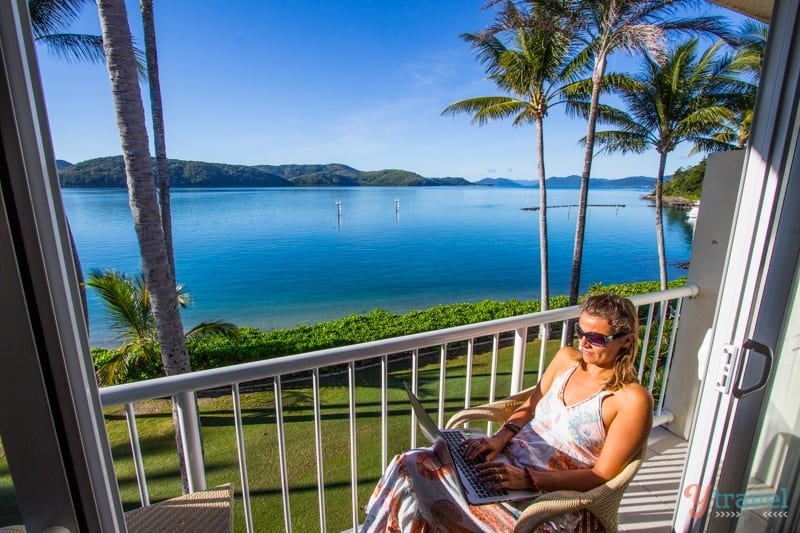
What blog pages do you include when you start a travel blog?
Start with an About Us Page and, at least, three blog posts published. That way when people visit your travel blog, you have a presence already.
You don’t want them reading one blog post and then having nothing else for them to read.
Your About Page is the most important, and often most visited page on your site.
Your About Page is where you connect your story with your readers, so they feel inspired and curious to continue to follow your journey and read your posts.
So put personality into the About Us page, share your story and give them a reason to follow you. I have more resources in the Digital Nomad Toolkit to help you write a cracking about Us page.
A Start Here page is also a great idea to help steer your readers to your best and most relevant content. This might be quite sparse when you first start, but you can always guide the reader to your email list, your About Us page and your best starting blog post.
A resource page is also something you can easily create, showcasing your favorite travel related products and resources.
Write quality content with an SEO structure!
Use the Yoast SEO plugin to help you optimize your posts so they can be found in the search engines BUT make your posts useful and helpful.
We now follow a specific SEO strategy and do keyword research using the Keysearch tool and SEMrush.
We write with the intention to give quality and useful information to our readers and to speak in a way that resonates with what they’re looking for.
As a result, we get a lot of traffic from the search engines. Quality Wins.
This post offers more tips on SEO for travel bloggers.
For a great course on SEO, check out Sticky Blogging SEO. I did this course and found it very helpful to find an SEO strategy that focused on producing great content first. It offered a clear strategy to implement. I am an affiliate of the course. I try them out first and then if I feels it’s a great fit, I’ll share it and become an affiliate partner if the option is there!
Use beautiful images
Photos sell the travel story and your brand. Use them within your posts well.
Don’t be afraid to show your face. It’s fine if you are afraid, but I do not recommend then that you start a travel blog. You build community by being real and relevant. You can’t do that if you don’t share your story and your face.
People can’t connect to an emoji or picture of your favourite cat.
Successful blogging comes from connection. Connection comes from real human interaction.
Be consistent
Choose a publishing schedule that works for you and be consistent with it.
We started our travel blog publishing daily and have been consistent with publishing at least four times a week. We had a lot of content we could write as we’d been travelling for 10 years before we started our blog.
I’m not necessarily saying publishing daily is the way to go.
Be realistic about what you can manage. You’re better off publishing less if it means you can be consistent with it. Consistency builds loyalty from your readers.
They trust you’ll show up for them.
What content will you write on your travel blog?
Consider the types of content you will write.
This might be challenging when you first start your travel blog as you’re not sure how your travel life will evolve.
But having a basic plan or structure in place will help you categorize your content and make it easy to find on your site.
You can poke around on our site to see how we structure and lay everything out. We’ve spent years researching, testing, and learning from many mistakes to figure this out.
Plus, we invest a lot of resources on getting smart people who know more than us to help us create one of the best travel blogs.
Our top level categories that we create travel content around are. Clicking on the links below will show you how we set out our content and structure our travel blog.
- Travel destinations
- Travel Planning
- Family Travel
- Travel Gear
- Money Management
- Travel Inspiration
8. Build your email list
When learning about how to start a travel blog don’t leave this important step until 12-24 months down the track.
It is so rare for me to meet another travel blogger who focuses on building an email list.
For us, it’s priority and the most essential part of our business for building connection and community. This is a gigantic step from blogging hobby to blogging business.
It most certainly takes a huge investment of time and perhaps money. But, it’s a business. Without the investment, you don’t get the rewards. I’ve a bunch of tools in our toolkit that will point you to the right email provider for you.
We use Ontraport, which is expensive but offers a LOT. It really is an all in one software. And you won’t need a lot of extra things with it
I don’t recommend it when you start a travel blog, nor until you start making a full-time income and have a large email community you can do advanced things, like segmentation of lists. e.g. we have email lists segmented into: family travel, digital lifestyle, money management etc.
Relevant: Ontraport Review: Kickass Email Marketing Automation for Growth
For those starting a travel blog, I recommend Mailchimp. It’s free until you get 2,000 people on your list (that will take time to do!) The only problem is it does not offer an autoresponder feature unless you pay a minimal monthly amount.
There’s also a new email provider making headlines. ConvertKit has been created with the professional blogger in mind. It’s quickly gaining a reputation as the easiest, most efficient and versatile email marketing system.
Their prices are very reasonable for what they offer. I have had a demo call with the company to check them out and I really liked what I saw.
I would definitely choose them if starting a travel blog.
Work out what is best for you, but my recommendation would be Convertkit over Mailchimp.
Relevant Reading: How to rapidly grow your email list with Interact Quiz Creator
9. Get social media savvy
Social media is an incredible way to share your journey, connect with like-minded people, and create a community.
Be human. Be warm. Have conversations. Share. Inspire. Help.
Each platform has a specific purpose and works in a particular way. Get to know each platform and use it in a way that suits.
There are a lot of social media platforms so choose the ones that resonate with you the most and what you feel will give you the most benefit.
Here’s what we use:
- Pinterest – the most effective and powerful platform for bringing people to your blog. At the end of the day, that’s what you want right? With over 4 million followers, this is the platform we dedicate the most of our time to. I wouldn’t say it’s great for building community, Pinterest is more of a visual search engine, but it’s brilliant for providing inspiring and useful content that can go viral. Here’s our post on how we use Tailwind for our Pinterest marketing. It is by far our favourite blogging tool.
- Instagram – The place to share our beautiful images and videos of our travel experience. It’s also a great platform for having interactions with your followers. Tailwind also is an Instagram scheduling tool.
- Facebook – the King of Community. We get the most in-depth discussions and interactions via Facebook. It’s not as good anymore for us bringing traffic to our blog, but for building your brand and having those important conversations for creating community it rocks.
- Twitter – Twitter is a brilliant tool for sharing useful content AND for networking, particularly for those in the industry. We love twitter.
- YouTube – we have just started creating YouTube videos. This has been the missing piece of the puzzle for us and will play a big part of our planned 1-2 year road trip around the USA.
Here’s a recent travel video of ours:
You can click the links above for each platform to connect with us on these social media platforms.
Social Media will help spread the word about your travel blog. The more your travel posts get shared socially, the more Google loves you!
10. Learn as much as you can about travel blogging and online business
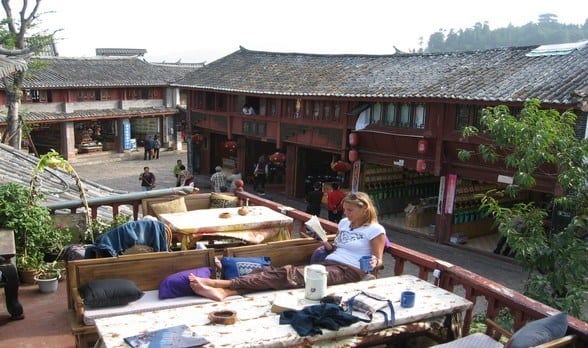
Separate the wheat from the chaff. Those who are successful with their travel blogging business spend time, money and energy investing in themselves.
That is their mindset, their communication skills, their ability to think and act like a business, improve their skills.
It is no happy accident that we’re so successful, and I never stop learning and working on myself. Two of the biggest questions I get is,
“What’s your secret? How can I have your life? and “How can do you do the amount you do especially with a hectic travel schedule and two energetic daughters?”
The secret is, I invest an incredible amount of time, energy, and money into myself. Courses. books. teachers. Podcasts. Meditation. Spirituality. Coaches. Experience. Failures. Setbacks.
That’s my secret on how to start a travel blog and scale it, and I don’t mind sharing it. My mother always says to me, “Caroline don’t’ tell everyone what you know, they might steal your ideas.”
My answer is,
“Mum, most people will never commit to the work and investment anyway so I’m not afraid.” and “There’s only one me Mum. There is only one Caz and Craig and our kids. I keep evolving and changing. No one can replicate who we are and what we do. People follow people”.
Know that. There is only one you!
You are the cornerstone and foundation of your business. If you make yourself strong, knowledgeable and energetically clean you will have success.
Before I started travel blogging I was traipsing around the world figuring out how I could get paid to travel, my idea was to arm myself with as many skills as possible so I could take on any job that came my way.
It’s a philosophy that took me from waiting tables, pouring pints, knocking on doors to sell, teaching English, chipping barnacles of pearl shells, and teaching children.
I was never without work because I’d worked on myself.
The more you learn, the more you grow, the more you can share, the more doors of opportunity open.
I was mentoring my sister and another client this week. I surprised myself with how much I know and can share. You get so immersed in what you’re doing that you forget not everyone knows what you do.
It’s the investment I’ve put into my journey that has helped me to grow and have success, which I can now share with others.
I hope you’re getting my point because it kills me how many people do not want to take this step and so continue to struggle and look for shortcuts.
How to start a travel blog (courses & resources) and make money
Here are a few tools to start you off. I have a heap of my favourite books, courses, podcasts, and teachers in the toolkit:
- My recorded webinar: How to move from blog to business: Six steps to creating a profitable business online
- B-School – this was the course that turned me into a very savvy business person. I use the teachings and skills I learned from this still in many aspects of my business. It also has the best community of any course I’ve done. It’s only opened once a year.
- How to create successful partnerships with brands and tourism boards Successful travel blogger Amanda Williams shares her tips and strategies.
- Making Sense of Affiliate Income: Our friend Michelle has the best course out there on how to make money from your blog using affiliate income. It’s the best form of income there is as once you’ve done the work, the income becomes passive meaning you earn money while you sleep. It’s powerful leverage. Michelle knows her stuff as she makes over $50,ooo a month from affiliate income. We’ve done the course, love it, and have implemented strategies with success. If there’s one thing we wish we did better in our travel blog business, it would be starting an affiliate income strategy from the beginning. We’ve left thousands of dollars on the table because we’ve only just started doing it five years later. Get started on the affiliate marketing course!
11. Enjoy the travel blogging journey
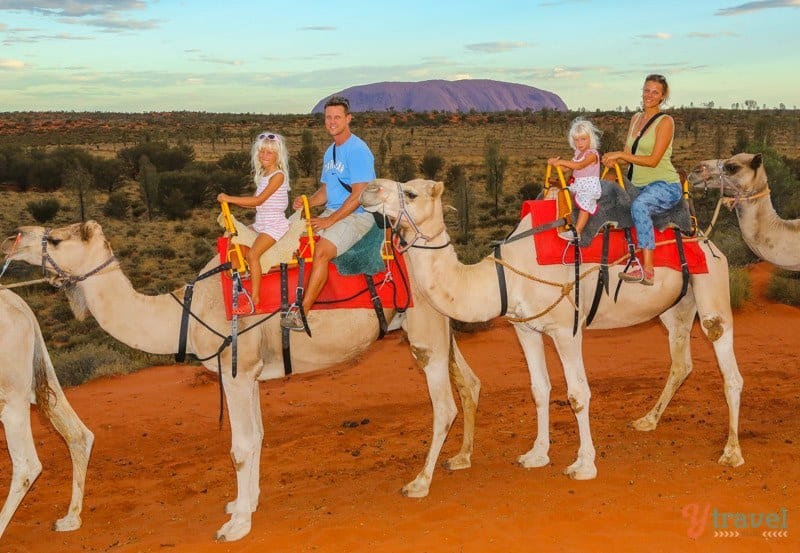
There’s no point figuring out how to start a travel blog and investing your time, money, and energy into it if you don’t love it.
By that, I mean the rewards, the processes, the hurdles, and growth.
Most of all enjoy experiencing what it feels like to make a difference to others. You’ll soon discover this is the best reward of all.
There will be times when you’ll feel like quitting, but if you’re making a difference to others and you’re passionate about what you do that’s what pulls you through!
Love it!
